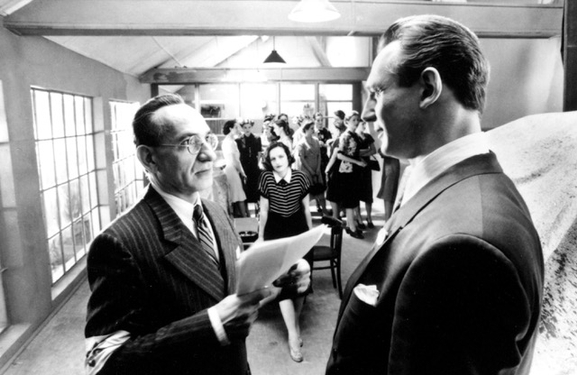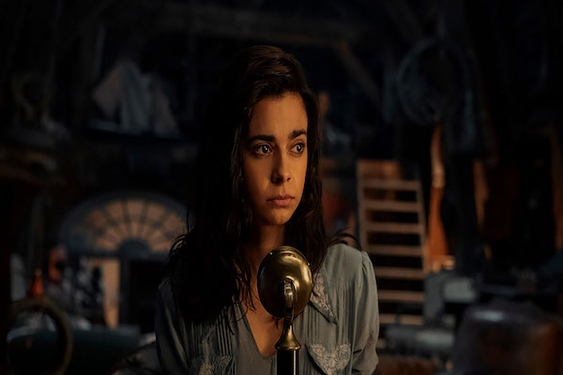Many are quick to declare colleges such as the University of Southern California and New York University as the cool, older brothers in the large family of U.S. film schools; however, aspiring filmmakers could benefit from looking into one particular smaller, boutique school that can spearhead their filmmaking careers: the International Academy of Filmmaking and Television (IAFT).
IAFT is truly an international school; there are campuses in Cebu (Philippines), Los Angeles, Miami and Hong Kong. Soon, the school will even open a campus in Antwerp, Belgium, according to IAFT CEO and director Kacy Andrews. Andrews has been involved in the entertainment industry for more than 20 years, including feature films, television series, theatre and animation.
“We are an international film school,” said Andrews. “We’re planning to expand. We’re picking [Antwerp] because the cost of living is manageable, and it’s a charming city.”
With campuses in different countries, IAFT is able to offer what most film schools (and other schools for that matter) can’t: a valuable, global film education and an experience of a lifetime.
“It’s that global experience,” said Andrews. “For example, students could study at one campus and then make a film in another country at another campus. Plus, there’s also a global network of alumni.”
Irena Byriel is a former student of IAFT who graduated in July 2012. Originally from Australia, she completed her diploma in filmmaking at the Cebu campus in the Philippines. According to her, attending the Cebu campus was a great balance between studying and relaxation.
“You are exposed to people, traditions and a lifestyle, which are different from your norm,” said Byriel. “It allows artists to discover newfound inspiration; it can be very deeply moving. You could walk down the street and film a man carving a traditional wooden guitar by the road – or hop on a small boat and see some of the most untouched pristine white sand beaches.”
The global opportunities are not the only advantages students can benefit from attending IAFT. Most film schools are large, factory-like institutions that churn out hundreds of graduates. With so many students, how likely is it that each one will receive the same attention and develop a close relationship with the instructors? IAFT strives to have small classes and close mentor-student relationships within each class.
“The classes at IAFT are small and intimate. I don’t believe I was ever in a class that had more than 20 people in it,” said Byriel. “As a boutique school, this is what IAFT specializes in. It’s the one-on-one time that you get with your mentors. It’s a great team environment, and you become really close with your fellow peers.”
“Mentors know students’ names, the students get a lot of attention…we want to keep it that way,” added Andrews.
Students also don’t experience the typical hour-long boring lectures that most college students are accustomed to. Instead, classes are interactive, and students learn what filmmakers do in the “real world.”
“It’s a very hands-on program,” said Andrews. “The mentors come in, and teach in the classroom, and the students have a lot of lab work. They’re taking editing classes, and they learn from theory and go out and do it.”
“You get so much opportunity to go out and actually film,” added Byriel. “And you can only learn so much from sitting in the classroom; the best lessons are learned on set, making mistakes, solving problems. IAFT immerses you in the hands-on experience so the elements become second nature.”
What students learn in class is invaluable, as the mentors are film experts who know their stuff, to say the least. IAFT makes sure that the faculty consists of industry professionals who have a stellar resume and/or have natural teaching skills. The mentors include those who have experience working on the staff of the Sundance and TriBeCa Film Festivals, shows like “One Life to Live” and “All My Children,” movies like Mystic Pizza, and some are even involved with other film schools like USC and UCLA.
“We like our mentors to have worked in the industry for at least 10 years,” said Andrews. “Some of our mentors have been in the industry for 20 to 30 years. We look for people who have great backgrounds…we really look for people who are personal and engaging.”
Upon completion of the program, the job opportunities for IAFT graduates are endless. In the past, students have gone on to make their own projects, winning film festivals and launching television shows. For example, Byriel created a TV show in Cebu called “Urbanfolio,” which features architecture and product design in the Philippines. It was based off of her thesis project at IAFT.
“I decided to create my own company and television series, which would play on the local Cebu network,” said Byriel. “I was able to learn the business side [of producing], part of it whilst effectively knowing how to execute the episode shoots…I can now say that it is one of best TV productions created in Cebu.”
So for those who want to experience filmmaking on a global level in more intimate settings while still getting a top-notch film education, IAFT should not be easily overlooked.
“[IAFT] is not just about the education; it’s about the culture and lifestyle too,” said Byriel. “It’s an unique school, not just a film school. It’s a place of free communication and expression, an artist’s haven.”












